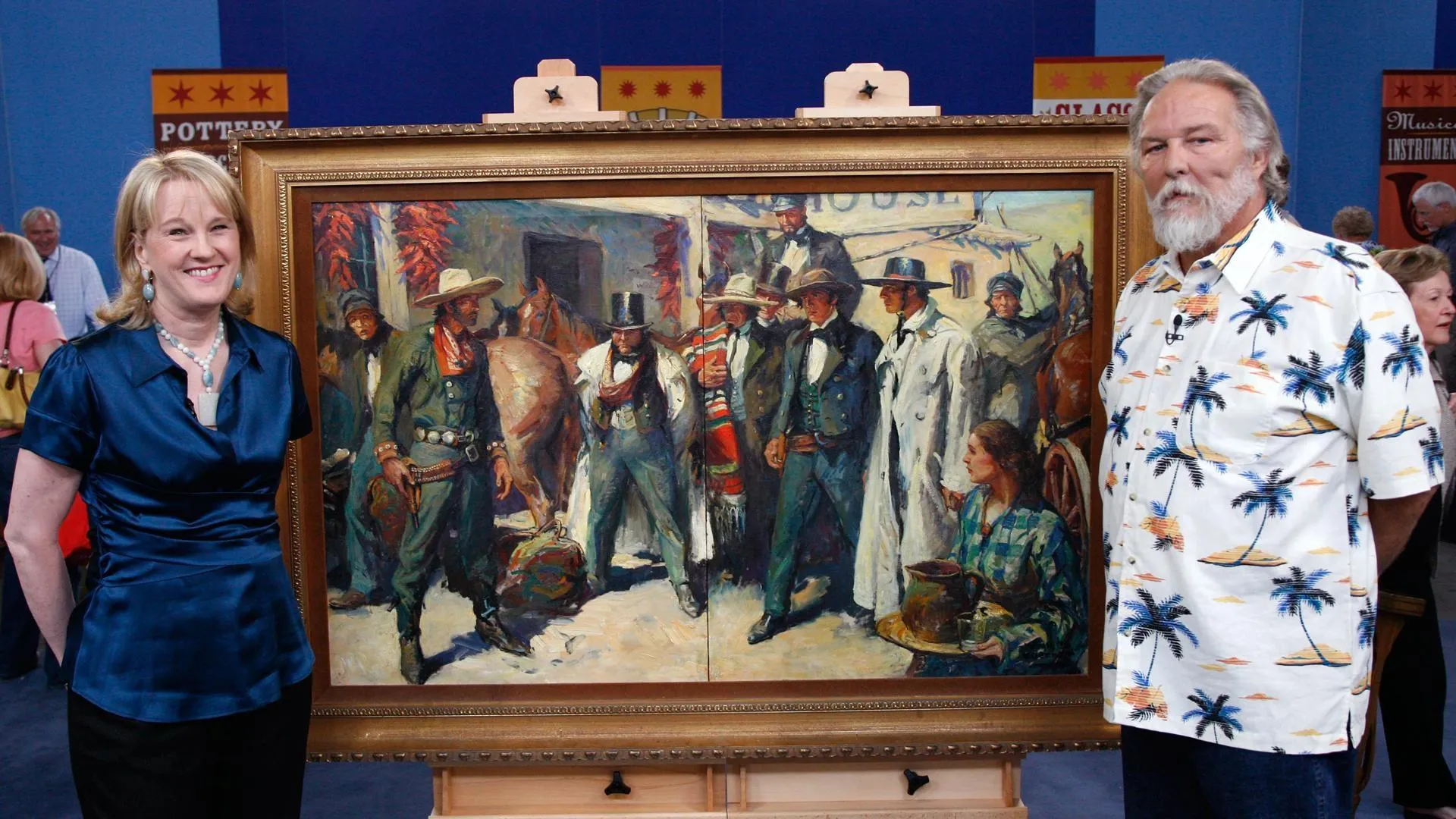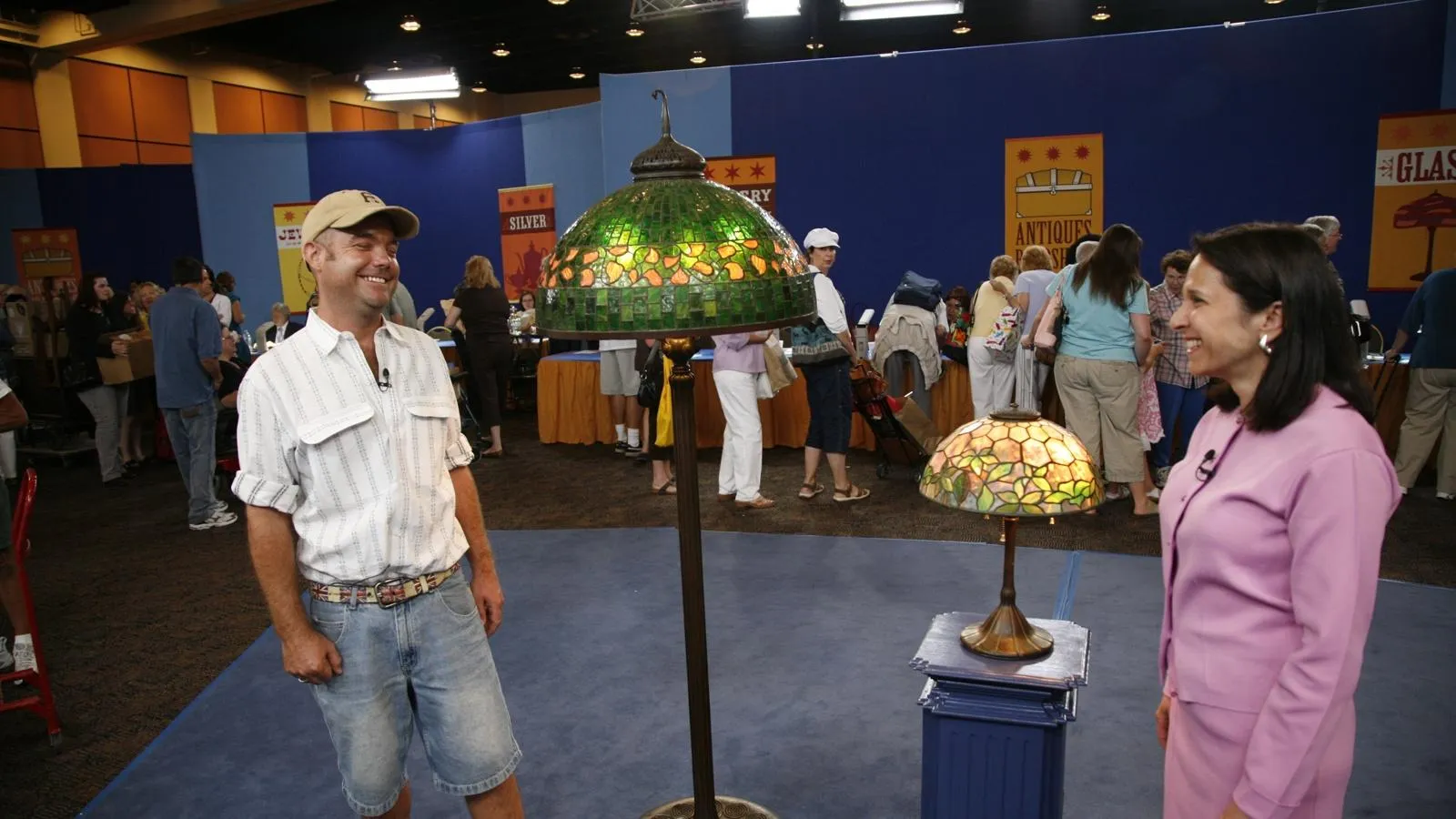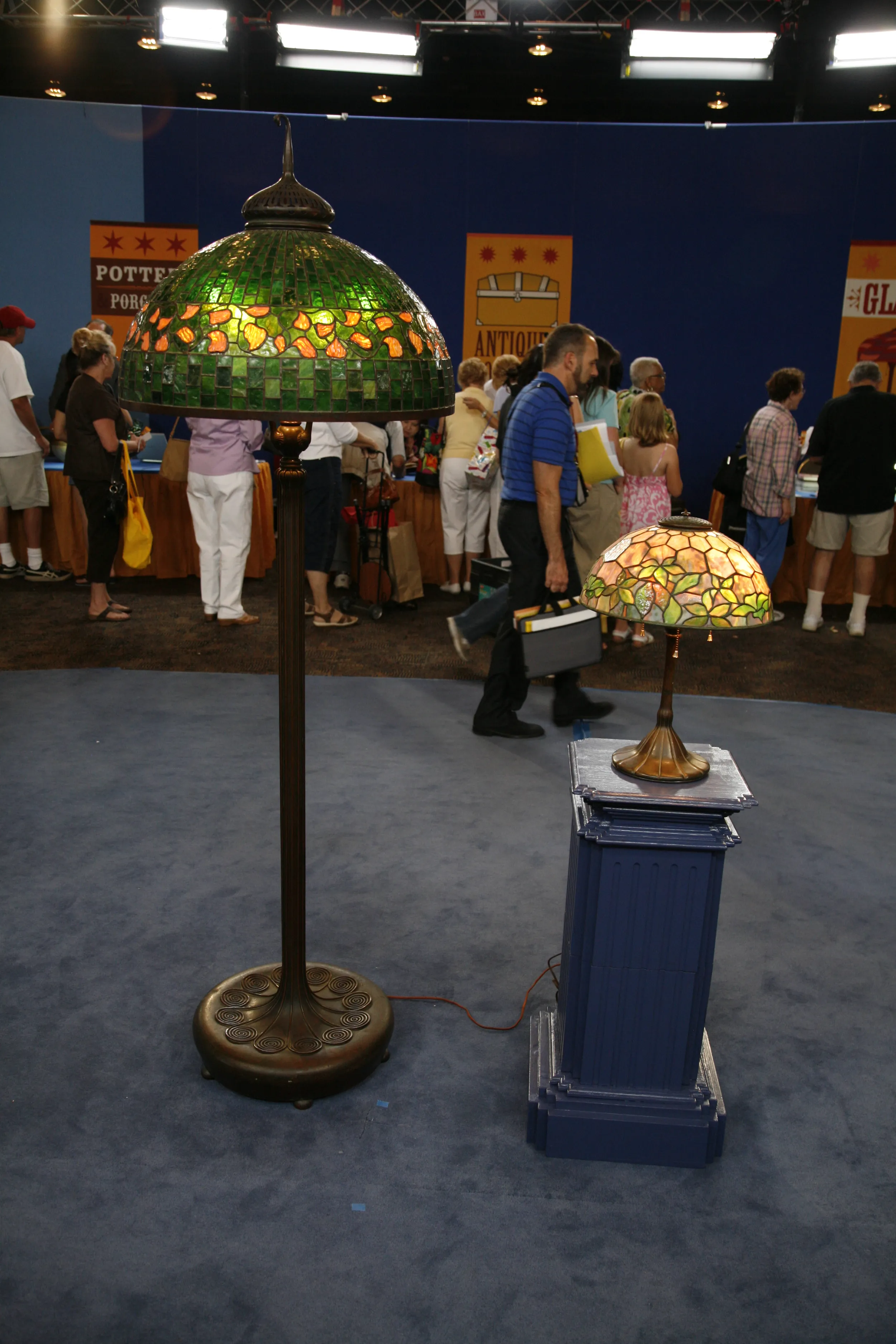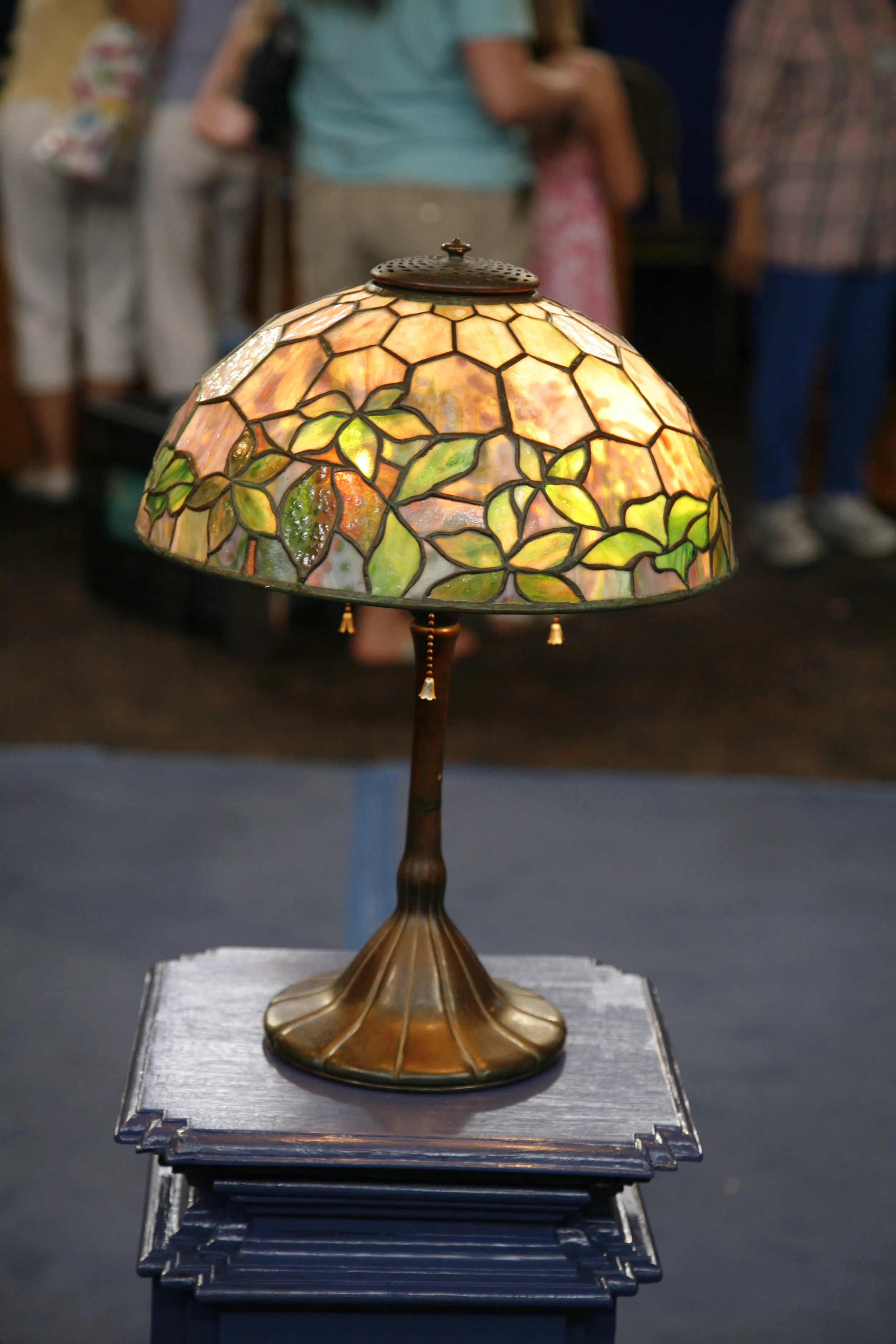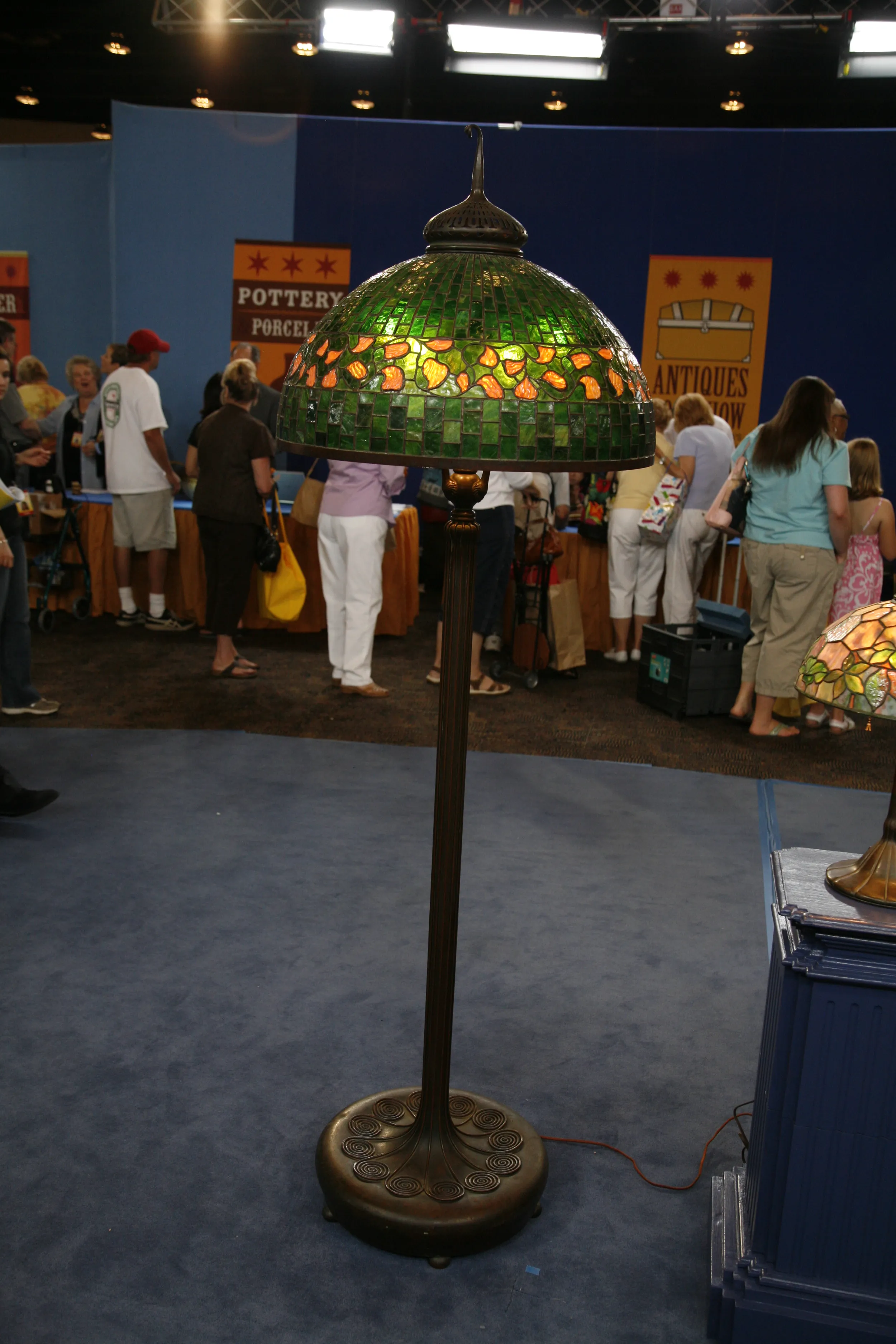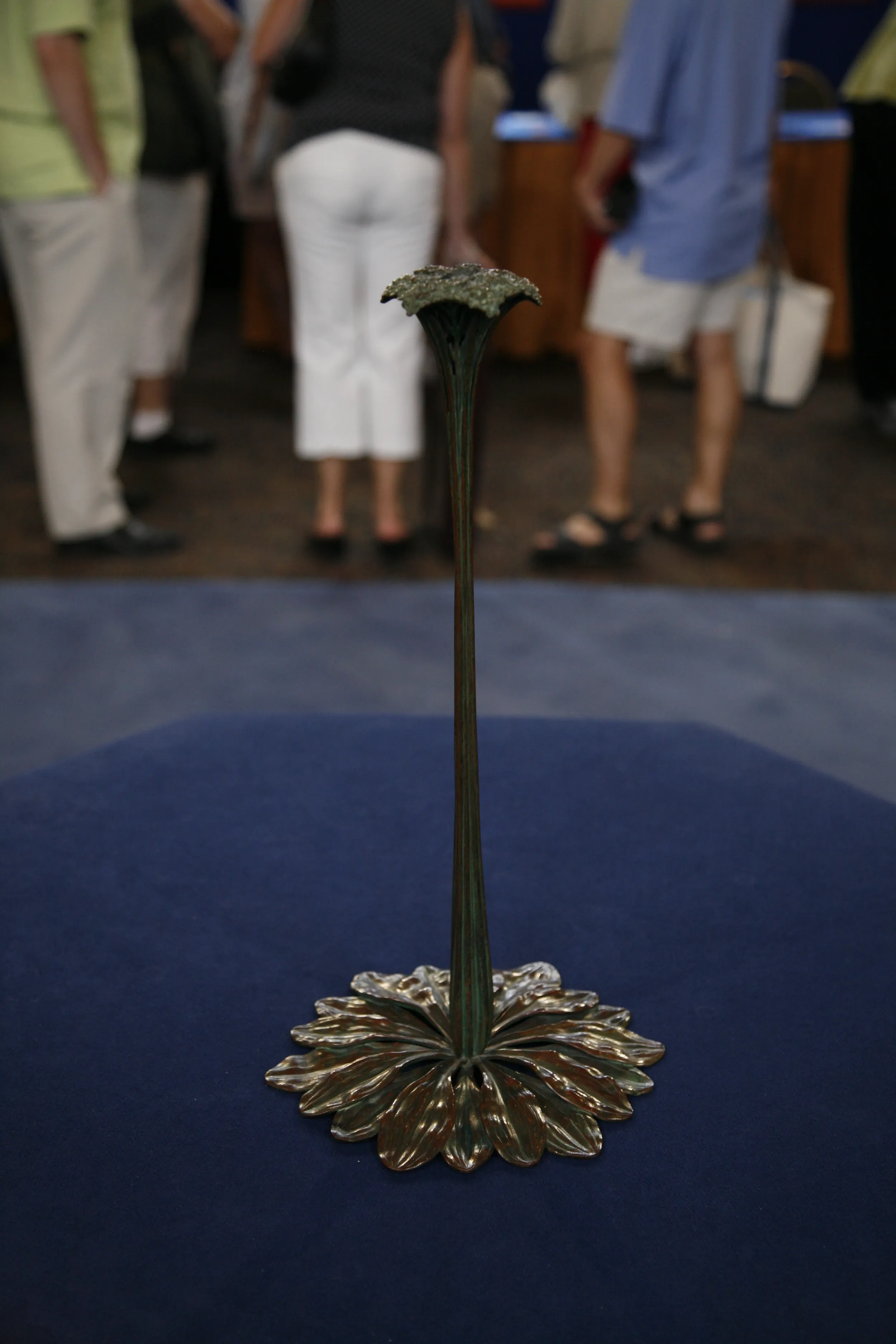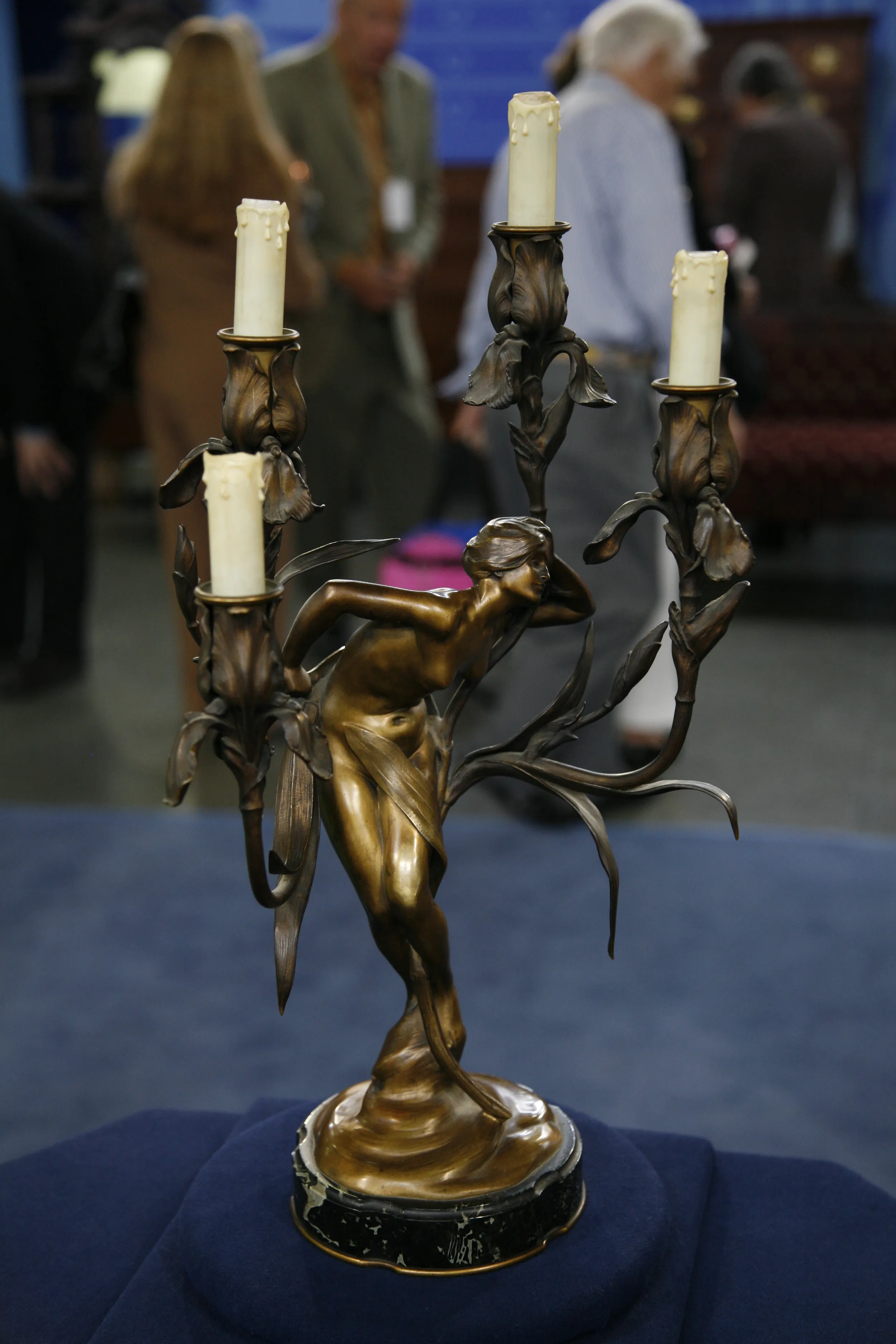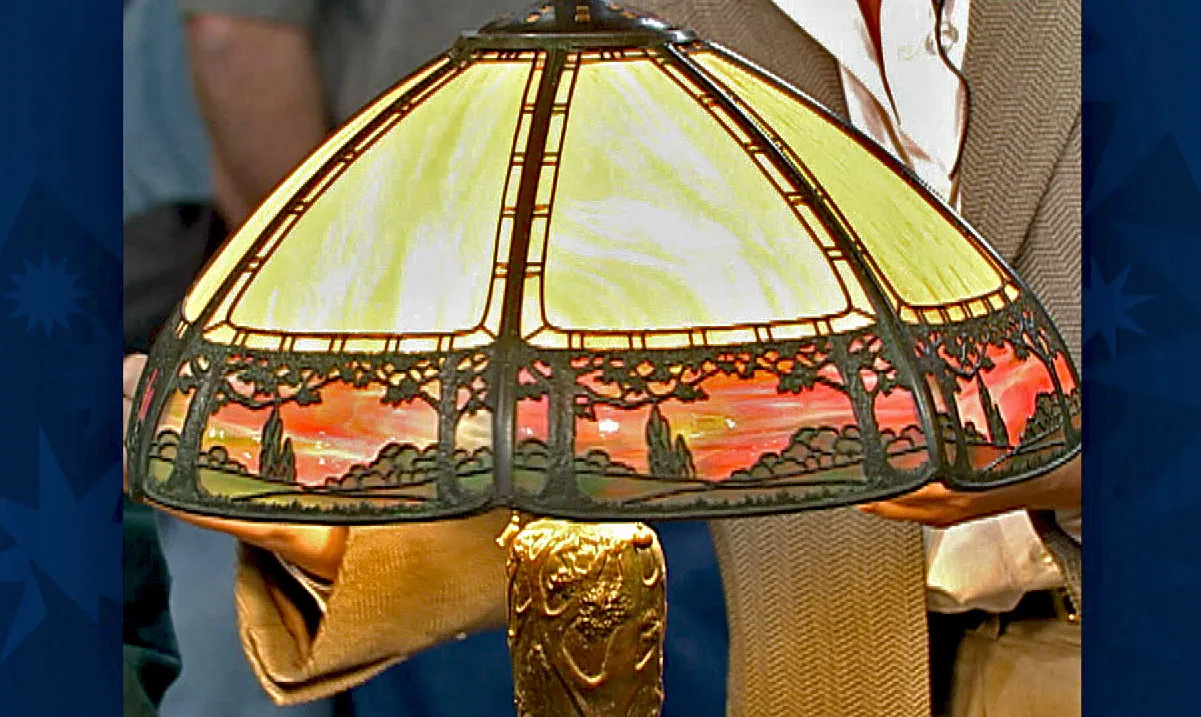GUEST: They belonged to a good friend of mine who passed away, uh, three years ago, in 2005, and he left them to me.
APPRAISER: And what did he tell you about them?
GUEST: He told me that they were Tiffany, and that the floor lamp was originally in New York, I think, in the '40s, and then he moved to Chicago in the '50s and, and the '60s, and then he moved to Los Angeles until 1988, and then he moved to Palm Springs. That one he bought in Los Angeles.
APPRAISER: Okay, and do you know when?
GUEST: Burbank. I would say probably '73. '74, maybe.
APPRAISER: 1973. What's interesting to see when someone collects lamps...
GUEST: Yeah.
APPRAISER: ...is that people prefer a certain style. And with these Tiffany Studios lamps-- and yes, they are Tiffany Studios lamps-- both of these are lamps, or what I would call geometric lamps, but they have a little bit of decoration-- they're a combination. You have a geometric background on the larger lamp, and then you have the decoration through here. These are what we call the woodbine pattern. And then the floor lamp, that pattern, we have a number of names for that. It's called swirling leaf, swirling lemon leaf, or lemon leaf.
GUEST: Okay.
APPRAISER: I'm not exactly sure what Tiffany called it.
GUEST: Uh-huh.
APPRAISER: I actually think that both of these lamps are on the early side, circa 1905. One of the reasons why is that the big shade, the glass is a very transparent glass. And at the time, when people were first using electricity, or even using fuel, in order to get any light, the glass had to be very transparent. This lamp I also think is early. The reason I know that is-- I'm going to take the cap off, or the heat finial, some people call it that, also. The signature says Tiffany Studios, New York. It then bears a number with a dash-- in the old days, certain people had speculated that that meant that the shade was a special order. But now scholars are tending to believe that it meant that it's an early lamp. This has particularly beautiful, beautiful glass in it, as does that lamp. I'm going to put this down for a second. And I just want to point out, clearly, these sockets have been replaced.
GUEST: Yes.
APPRAISER: A while ago, but nevertheless, they're not original Tiffany sockets. The other thing is, on both of these lamps, a lot of times these get lost, but these are the originals, which is a very nice bonus to have. And even the, the original caps have a lot of value today.
GUEST: Really?
APPRAISER: On this lamp, it's on a senior floor base, it's decorated. There were two kinds of decorated senior floor bases. There's this one, and then there was a pod-decorated base. That one's a little more desirable, but there's nothing wrong with this. It has wonderful finish on it. It matches this shade beautifully. And I also wanted to point out this little signature tag here.
GUEST: Yes.
APPRAISER: That's an, actually a very early tag, also. A lamp like this, I would recommend putting an insurance value of $85,000. And on this one, I would put an insurance value of $45,000.
GUEST: Okay.
APPRAISER: They're both very nice examples, and I am delighted to see them.
GUEST: Great.

